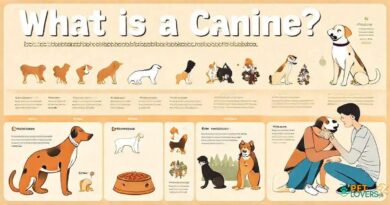What is Quarantine tips
What is Quarantine Tips for Dogs?
Quarantine tips for dogs are essential guidelines designed to ensure the health and safety of your canine companion during times of illness or potential exposure to infectious diseases. Understanding what quarantine means in the context of pet care is crucial for every dog owner. Essentially, quarantine involves isolating your dog from other animals and humans to prevent the spread of illness, particularly after exposure to sick pets or during outbreaks of contagious diseases.
Recognizing When to Quarantine Your Dog
It is vital to recognize the signs that may necessitate quarantining your dog. If your pet has been in contact with another dog that has shown symptoms of illness, such as coughing, vomiting, or diarrhea, it is advisable to implement quarantine measures. Additionally, if your dog has recently traveled to areas with reported outbreaks of canine diseases, taking precautionary steps to isolate them can help protect their health and the health of other pets.
Duration of Quarantine for Dogs
The duration of quarantine for dogs can vary depending on the specific illness or exposure risk. Generally, a quarantine period of 14 days is recommended, as this timeframe allows for the incubation period of many contagious diseases to pass. However, it is essential to consult with a veterinarian for tailored advice based on your dog’s health status and the specific circumstances surrounding their exposure.
Creating a Safe Quarantine Space
When quarantining your dog, it is crucial to create a safe and comfortable space for them. This area should be away from other pets and human traffic to minimize the risk of spreading any potential illness. Ensure that the quarantine space is well-ventilated, clean, and equipped with your dog’s essentials, such as food, water, bedding, and toys, to keep them comfortable during this period.
Monitoring Your Dog’s Health During Quarantine
While your dog is in quarantine, it is essential to monitor their health closely. Keep an eye out for any changes in behavior, appetite, or energy levels. If you notice any concerning symptoms, such as lethargy, loss of appetite, or unusual coughing, it is crucial to contact your veterinarian immediately for further guidance and potential treatment options.
Maintaining Hygiene During Quarantine
Maintaining proper hygiene during your dog’s quarantine is vital to prevent the spread of germs and ensure their well-being. Regularly clean and disinfect the quarantine area, including food and water bowls, bedding, and toys. Wash your hands thoroughly before and after handling your dog or any of their belongings to minimize the risk of transmitting any pathogens.
Socialization and Mental Stimulation
Quarantine can be a challenging time for dogs, as they may miss social interactions with other pets and humans. To help alleviate boredom and provide mental stimulation, engage your dog in interactive play and training exercises within their quarantine space. Puzzle toys, treat-dispensing toys, and basic obedience training can keep their minds active and help reduce anxiety during this period.
Reintroducing Your Dog to Other Pets
Once the quarantine period is over and your dog has shown no signs of illness, it is time to reintroduce them to other pets. This process should be gradual to ensure that all animals feel comfortable and safe. Start by allowing them to sniff each other through a barrier, such as a baby gate, before allowing direct interaction. Monitor their behavior closely during the reintroduction to prevent any potential conflicts.
Consulting Your Veterinarian
Throughout the quarantine process, maintaining open communication with your veterinarian is crucial. They can provide valuable insights and recommendations tailored to your dog’s specific situation. Whether you have questions about symptoms, quarantine duration, or reintroduction strategies, your veterinarian is an essential resource for ensuring your dog’s health and safety.



